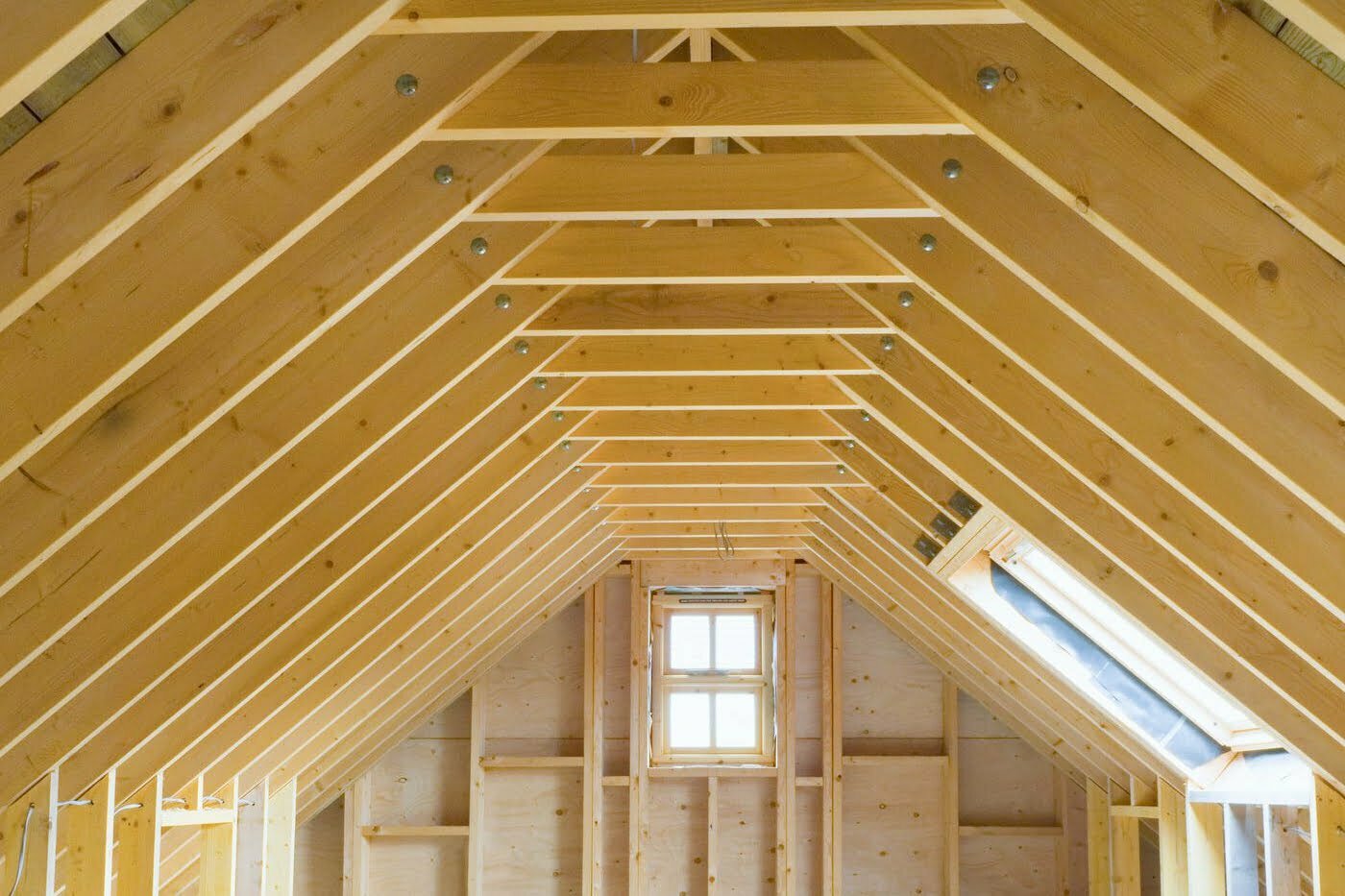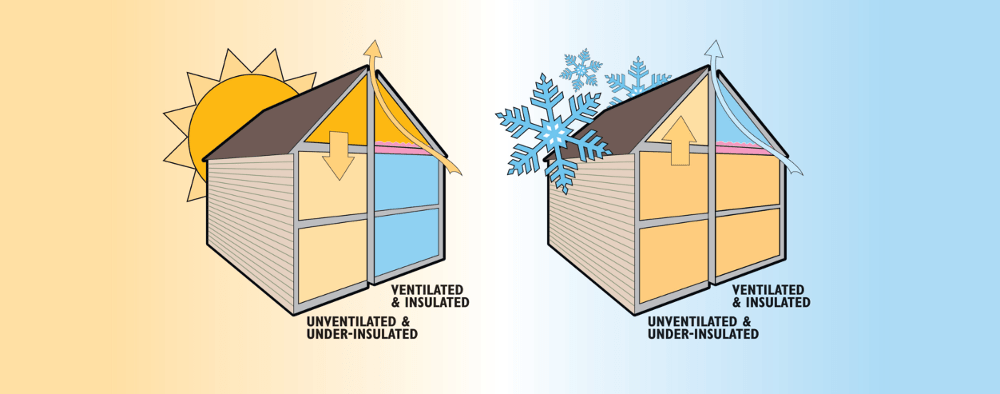The attic is a space that’s often overlooked when it comes to home renovations but has huge potential for energy saving and enhancing indoor comfort. When it comes to insulating this area, spray foam is an excellent choice thanks to its powerful insulation capabilities, air-sealing properties, and long lifespan.
Why Attic Insulation is Necessary
In every home, the attic plays an important role in preventing heat loss and ensuring indoor comfort. Without insulation that provides a solid air seal, issues like ice dams, storm damage, and inflated energy bills can occur. This is where the benefits of spray foam attic insulation stand out. It not only offers superior insulation but can even reinforce the structural integrity of your home.
What Is Spray Foam Attic Insulation?
Spray foam attic insulation is a liquid foam that expands and hardens upon application, creating a thick layer of insulation in your attic space. Installing spray foam insulation involves the use of special equipment that turns the liquid into foam, enhancing its insulating properties.
Role of Spray Foam Attic Insulation in Energy Efficiency
Spray foam attic insulation’s ability to prevent heat transfer makes it incredibly helpful in regulating the HVAC system of a home, reducing the need for energy wasted on excessive heating or cooling. Efficient insulation can reduce utility bills significantly.
Common Issues with Uninsulated or Poorly Insulated Attics
Uninsulated or poorly insulated attics can lead to several issues in your home, from drafty rooms to high heating and cooling costs, and even ice dams.
By installing spray foam insulation, you can combat these problems effectively. While spray foam costs can seem high upfront, the benefits in the long term are truly worth it. Just be sure to hire a professional spray foam installation company. DIY installation or using an inexperienced contractor can lead to inefficient installation, contributing to poor insulation.
Benefits of Spray Foam Insulation:
Spray foam insulation is growing in popularity among homeowners due to its many benefits beyond traditional fiberglass insulation. From energy savings to draft reduction, spray foam delivers proven performance advantages.
Creates a Seamless Air Barrier
Spray foam insulation expands and adheres tightly to surfaces to create a seamless air barrier. This prevents outdoor air, moisture, allergens, and pollutants from infiltrating the home. By sealing even the smallest cracks, gaps, and crevices, spray foam maintains a comfortably draft-free indoor environment. The airtight seal also inhibits the growth of mold, mildew, and dust mites by blocking moisture intrusion. Correct installation by professionals ensures maximum coverage and effectiveness of the air barrier. Homeowners can breathe easier knowing irritants are kept out of their living spaces.
Provides Superior Thermal Insulation
With an insulation value of up to R-7.4 per inch, spray foam delivers one of the highest R-values among insulation materials. This exceptional thermal performance blocks heat transfer far better than fiberglass. Spray foam insulation can lower monthly heating and cooling bills by up to 50%. It also minimizes temperature differences between floors that lead to energy losses. The robust insulation capacity enables the formation of a thermal envelope around the home. Spray foam traps conditioned air inside, preventing wasted energy costs.
Prevents Hazardous Ice Dams
In cold climates, spray foam is invaluable for sealing attics to prevent ice dams. When attics are improperly insulated, warm household air can escape and melt snow on the roof. But spray foam blocks this by preventing warm attic air from rising and melting roof snow. This protects against leakage issues. Correctly installed spray foam forms an airtight attic seal to maintain ideal roof temperatures. Homeowners avoid catastrophic water damage, leakage, and roof decay with this protective barrier.
Blocks Pest Infiltration
Pests and bugs can enter homes through tiny exterior openings. But spray foam expands and hardens to seal off any gaps where pests could come in. This reduces entry points for disease-carrying critters and prevents infestations in walls and attics. The foam leaves no areas uncovered for pests to chew or nest their way inside the home. Families can live pest-free without worrying about infestations or critters in walls.
Enhances Comfort
With spray foam insulation, homeowners enjoy greater comfort all year long. It allows for consistent indoor temperatures immune to outside weather changes. Irritating outdoor particles are also minimized, improving air quality and health. Rooms insulated with spray foam feel more comfortable. Drafts and cold spots are eliminated, so the interior feels pleasantly warmer in winter and cooler in summer. Allergy sufferers also benefit from reduced pollen, dust, and particles in the air.
With benefits like air sealing, energy savings, ice dam prevention, and pest blocking, spray foam insulation outperforms traditional options. Homeowners can enjoy greater comfort and efficiency by investing in this smart upgrade.
Spray Foam Attic Insulation Installation Process
To get the most out of your spray foam insulation, proper installation is important. Be sure to follow the proper steps and protocols for spray foam insulation in your attic.
The Spray Foam Insulation Installation Process
Professional insulation contractors follow a certain process when installing spray foam insulation. After a thorough home inspection, the team will determine the amount of foam needed based on the area size and the desired R-value.
The team then prepares the area, laying down protective sheeting if necessary to prevent damage to the surrounding areas. The spray foam is then applied to the desired thickness, ensuring a thorough and even covering.
Safety Precautions and Best Practices for Installation
During the installation process, safety matters most. It’s important to remember that spray foam insulation should always be installed by a professional contractor. These professionals have been trained to deal with any potential hazards that may arise during installation, such as the release of harmful fumes from blowing agents or the risk of combustion. Ensure proper ventilation is in place before installation begins to minimize exposure to harmful chemicals.
Costing and Long-Term Financial Benefits of Spray Foam Attic Insulation
In the world of home improvement, it’s often the upfront cost that deters homeowners from making positive changes. But with spray foam insulation, the initial investment can be easily justified when considering the resulting energy savings.
You can get an accurate quote for your project from a professional insulation contractor, who will assess the scope of work during a home inspection.
Long-Term Savings and Return on Investment from Spray Foam Insulation
While the upfront cost may seem daunting, it’s important to keep in mind the potential savings on energy bills over time. Spray foam insulation can reduce your heating and cooling costs dramatically, depending on the condition of your existing insulation and the climate in your area.
Not to mention, spray foam insulation also adds value to your home, which can translate into a higher selling price should you decide to move in the future.
Potential Tax Credits and Rebates
Another benefit of spray foam insulation is that it may qualify for tax credits and rebates. Both federal and state incentives can help offset the cost of installing spray foam, making it an even more attractive option for homeowners seeking to improve their home’s energy efficiency.
Making a Choice: Is Spray Foam Attic Insulation Right for Your Home?
If you’ve been thinking of ways to reduce your energy bills, you’ve likely thought about the insulation in your attic space. But how do you know if this is the right choice for your home?
Factors to Consider Before Choosing Spray Foam Insulation
Before you commit to installing spray foam insulation in your attic, you should consider your:
- Budget
- Existing insulation
- Energy efficiency goals
- HVAC needs
- Climate
- Attic accessibility
- Age of roof
Consultation with Insulation Professionals: Getting the Job Done Right
Having a consultation with a professional insulation contractor is crucial to get your project on track and completed successfully. These experts can assess your home’s needs, suggest the most appropriate insulation type, and give a precise estimate of the spray foam insulation cost.
Installing spray foam attic insulation is a big home improvement project. But with careful consideration of the factors discussed and the help of qualified insulation professionals, it can lead to a more comfortable home — and noticeable energy savings.
Spray Foam Attic Insulation from Cincinnati RetroFoam
Cincinnati RetroFoam is the best choice for homeowners considering spray foam insulation for their attic. Our professional technicians evaluate each attic and then properly install spray foam using specialized equipment in accordance with industry standards. Cincinnati RetroFoam follows strict protocols for preparation, safety, ventilation, and technique. Our expertise ensures maximum energy efficiency along with enhanced comfort and air quality. As an experienced insulation installation contractor, Cincinnati RetroFoam delivers ideal spray foam attic insulation outcomes for every home. Get your quote today.
FAQs
How long does spray foam insulation last in attics?
When properly installed, spray foam insulation lasts over 50 years in attic applications without needing to be replaced or losing effectiveness over time.
Does spray foam expand when sealed in an attic?
Spray foam undergoes nearly all of its expansion and curing when initially applied in attics before sealing. Negligible expansion occurs long-term once fully cured and enclosed.
Is spray foam insulation good for attics?
Spray foam insulation can be an excellent choice for insulating attics. Spray foam completely air-seals the attic space when installed correctly. This air sealing prevents conditioned air from escaping to the attic and unconditioned air from entering the home. Spray foam insulation is also less prone to settling and leaving gaps over time. The higher R-value per inch of spray foam allows for better insulation performance in the limited space of an attic.


